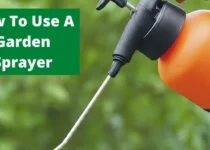How To Increase Water Pressure in Garden Hose?
A weak, sputtering garden hose can turn a simple watering session into a frustrating chore. But before you call a plumber, there are several things you can do to increase water pressure and reclaim your hose’s power. Here’s a guide to boosting your H2O:

1. Identify the Source of the Problem:
- Main Water Line: Start by checking the pressure at your main water line. If it’s low, you’ll need to address the issue at the source. This could involve contacting your water company or a plumber to check for leaks or issues with your water supply.
- Hose Issues: If your main line pressure is adequate, the problem could be with the hose itself. Check for kinks or clogs in the hose, and replace any sections that are damaged or worn out.
- Faucet Issues: A faulty faucet can also limit water pressure. Check for any debris or obstructions in the faucet spout or aerator, and make sure the valve is fully open.
2. Simple Solutions for Increased Flow:
- Hose Length: A longer hose will inevitably result in lower water pressure due to increased friction. Try using a shorter hose or consider a hose reel that can easily store and retrieve the hose, minimizing its length.
- Hose Diameter: A thicker hose with a larger diameter will allow more water to flow through it, boosting pressure. Consider upgrading to a ¾” or 1″ diameter hose if possible.
- Hose Nozzle: A nozzle with a smaller opening will create more pressure at the end of the hose. Choose a nozzle with adjustable settings so you can tailor the flow to your needs.
3. Incorporating Booster Devices:
- Hose Booster: These devices attach directly to the hose and use a small pump to increase water pressure. They are available in both manual and electric models.
- Water Pressure Booster Pump: For more serious pressure issues, a dedicated water pressure booster pump can be installed on your main water line. These pumps are typically powered by electricity and can significantly increase water pressure throughout your home.
4. Maintenance and Prevention:
- Regular Cleaning: Clean your hose regularly by flushing it with water and removing any debris. This will prevent clogs and maintain optimal flow.
- Winterizing: In colder climates, drain your hose and store it indoors to prevent freezing and damage.
- Avoid Kinks: Minimize kinks and bends in your hose by winding it neatly on a hose reel or using a hose guide.
5. DIY Pressure Check:
You can check your water pressure with a simple gauge. Connect the gauge to the faucet you intend to use with your hose. The ideal pressure for outdoor use is typically between 40 and 60 PSI.
6. Professional Help:
If you’re unable to resolve the issue yourself, or if your water pressure is consistently low, don’t hesitate to consult with a professional plumber. They can diagnose any underlying problems and recommend appropriate solutions.
By following these tips and addressing any underlying issues, you can improve your garden hose’s water pressure and make watering your plants a more enjoyable experience.
Related Posts

How To Get Rid Of Dandelions?

How To Get Rid Of Crabgrass Without Chemicals?

